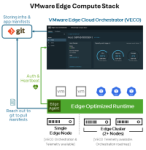Traditional substation application architecture is outdated and inflexible. A change in approach is required to meet the future needs of renewable power generation, transmission and distribution and to handle increased consumer demand. Across the globe, electric utilities are looking for ways to modernize, realize their sustainability goals, and improve grid resiliency.
Distributed Energy Resources (DERs) such as solar and wind are actively being commissioned to add capacity and displace existing fossil fuel generation. But their unpredictable nature is changing the operating characteristics of the grid, as the weather can change and the resulting peaks and troughs of generation need to be balanced with consumption. This is especially true for traditional, low-voltage delivery areas where DERs represent an increasingly large percentage of local supply.
All of these problems require electric utilities to adopt a modern, flexible, and software-defined grid that can efficiently manage the complexity required at substations.
Electric utilities also face a number of challenges when modernizing substations: limited connectivity at the grid edge; cyber security compliance requirements; harsh substation environments; size and scale of substation sites; and legacy device inventory management. There is also an added complexity of application deployment, lifecycle management (smart meters, sensors and IoT devices), and limited onsite IT expertise.
Meeting the modernization challenge with E4S
To address these challenges, the Edge for Smart Secondary Substation (E4S) alliance was formed, with VMware by Broadcom as a founding member. The alliance aims to drive a standards-based, open, interoperable, and secure architecture for the utilities industry.
VMware Edge Compute Stack aligns with this effort, providing an edge-optimized runtime and orchestration platform for managing edge applications across multiple sites with limited resources. VMware Edge Compute Stack introduces new features that help electric utilities achieve a modern, flexible, software-defined grid.
One of the key requirements for electric utilities stated by E4S guidelines is the Central Edge Management System (CEMS), which provides guidelines for managing a large number of distributed compute nodes at the edge of the electric grid. The CEMS specification outlines several key requirements, including:
- Inventory management for all edge nodes.
- Zero touch provisioning for automatic registration of edge devices.
- Unified monitoring of resource utilization and all edge nodes.
- Continuous Integration/Continuous Delivery (CI/CD) system allowing the creation and modification of new applications.
- Disconnected operation support ensures that the edge nodes and applications continue to run when connectivity to CEMS is unavailable.
- Low network bandwidth support lets utilities function efficiently in areas where limited bandwidth is available.
VMware Edge Cloud Orchestrator addresses CEMS requirements
VMware Edge Cloud Orchestrator (VECO) is a key component of VMware Edge Compute Stack that addresses the CEMS requirements. It provides a single pane-of-glass for managing all edge workloads distributed across thousands of sites from a central location. VMware Edge Cloud Orchestrator features include:
- Edge fleet management: A single location to store all edge devices, and the ability to group them into sites based on business logic, enables efficient management of edge devices and improves overall operational efficiency for the business.
- Zero-touch provisioning: A pull-based architecture, where VMware Edge Compute Stack communicates with VMware Edge Cloud Orchestrator and registers itself automatically, eliminates the need for manual configuration. This reduces the risk of human error and improves the speed and accuracy of device deployment.
- Unified monitoring of resource utilization and all edge hardware provides real-time visibility into edge device performance and enables proactive issue detection and resolution.
- GitOps model: Integration with Git as the CI/CD source of truth for storing application data in YAML files enables collaboration on application configuration between different teams, reduces the risk of configuration drift, and improves the pace of application delivery.
- Disconnected operations: VMware Edge Compute Stack has the ability to continue running applications even when connectivity to VMware Edge Cloud Orchestrator is down, ensuring business continuity and minimizing impact of network outages on edge operations.
- Low network bandwidth: VMware Edge Compute Stack and VMware Edge Cloud Orchestrator are designed with low network bandwidth in mind and are able to function in environments where network connectivity is low, reducing the risk of service disruption and improving overall reliability.
As can be seen in Figure 1 and 2, there are many analogies between VMware Edge Compute Stack and the E4S CEMS architecture. Table 1 highlights the main analogies:
| E4S Architecture | VMware Edge Compute Stack Architecture |
| Central edge management | VMware Edge Cloud Orchestrator |
| Edge manager | Edge-optimized runtime |
| Orchestration | Container and VM management |
With VMware Edge Cloud Orchestrator, electric utility companies can easily create and modify applications for multiple edge devices from a single location, streamlining operations and improving management in remote settings. VMware Edge Cloud Orchestrator empowers utilities to automate maintenance tasks, boost visibility into application performance, improve overall grid resiliency and streamline operations.
In conclusion, VMware Edge Compute Stack with VMware Edge Cloud Orchestrator is uniquely positioned to solve the challenges of grid modernization by complying with the E4S standards. This makes it compatible with other software and hardware vendors that align with the E4S standards. By aligning with the CEMS specifications, VMware Edge Cloud Orchestrator provides a robust and scalable solution for managing edge nodes and applications, enabling utilities to build a modern, flexible, and software-defined grid.
Find out more about VMware Edge Compute Stack and start your journey towards grid modernization.







